Experience ‘fireworks’ in your mouth with a colourful bowl of ‘mazesoba’ at Sri Petaling’s Menya Hanabi
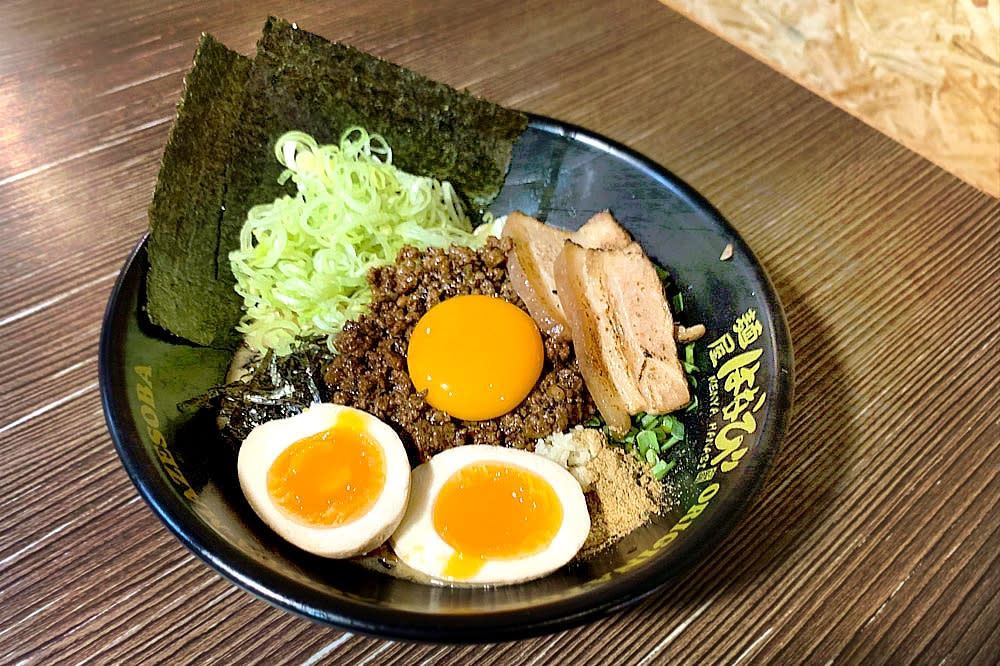
KUALA LUMPUR, July 8 — My niece asks me what I would like for dinner and I reply, “Taiwanese noodles, maybe?”
Alas, the Taiwanese restaurant I frequent is packed to the gills so we have to look elsewhere. Wandering around Sri Petaling has become a new favourite pastime of mine as there is always a shop I have yet to try.
The best uncles are the sort who act as food guides, as I’m sure my niece would agree.
After passing yet another hotpot restaurant (there seems to be an invasion of these in the neighbourhood, one or two on nearly every block), we spot something that piqued my interest years ago but I hadn’t yet tried thanks to the long lines back then.
Menya Hanabi is a chain from Nagoya, Japan that specialises in mazesoba, a style of soupless ramen. Mazesoba isn’t the same as tsukemen where the reduced soup is served on the side as a dipping sauce.
No, here you get a truly soupless bowl.
I have had mazesoba before in Japan and there are a few constants: springy noodles, typically curly and chewy, the better to carry the unctuous sauce; minced pork, more likely spicy than not; thin slices or thick slabs of pork chashu; gyofun (fish powder made from four types of fish); seaweed, green onions, raw garlic and the requisite topping of a single raw egg.
Here’s the best thing about mazesoba: it is near impossible to receive a terrible bowl of mazesoba.
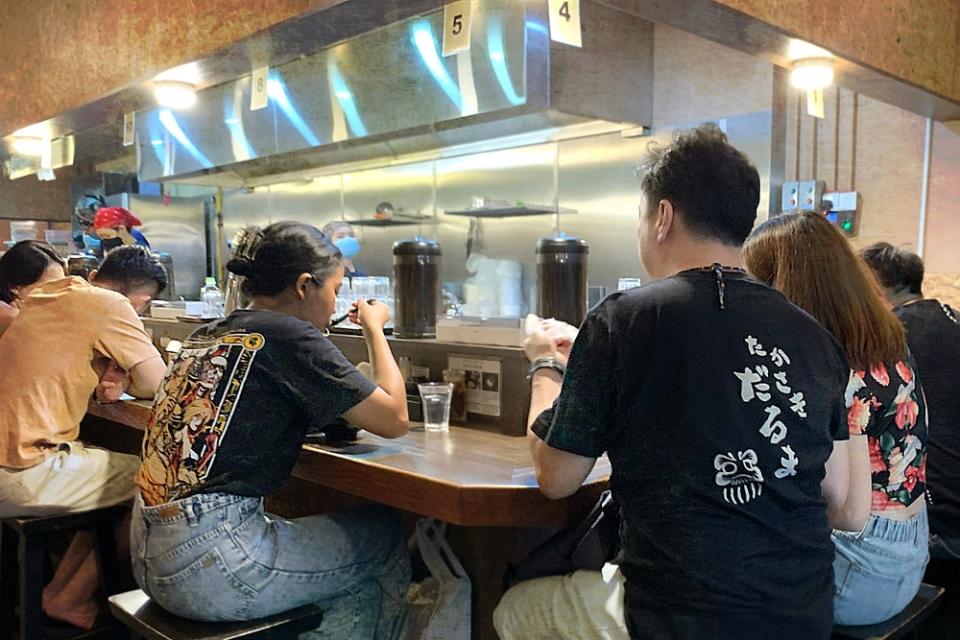
The ramen bar offers counter seating with views of the open kitchen.
Consider the ingredients I have just listed. Now imagine them all tossed together and thoroughly mixed up. What you will have is a bowl of manna.
Which is more or less what I promise my niece as we walk into the menya (which is Japanese for a ramen shop). It’s nearly full house, but unlike the Taiwanese restaurant, I knew that tables turn fast in a briskly run menya.
In fact, we have barely enough time to glance at the menu before we are shown to our table. Fantastic service.
The ramen bar offers counter seating with views of the open kitchen. These are the best seats, naturally, as you get to see all the hustle and bustle. One cook measuring the correct amount of noodles whilst another dips it into boiling water, timing the cooking down to the very second.
I order Menya Hanabi’s signature Nagoya Mazesoba DX, with an extra order of cheese that melts into the noodles, while my niece opts for the Toroniku Nagoya Mazesoba which features thick chunks of braised pork cheeks.
The story goes that Menya Hanabi’s original shop owner was attempting to make Taiwanese ramen (a specialty of Nagoya) but ran out of soup. Rather than waste the noodles and the meat, he just made a soupless bowl of ramen topped with meat... which in time transformed into the mazesoba we recognise today.
(So I guess my niece and I are having a sort of Taiwanese noodles in the end, after a fashion.)
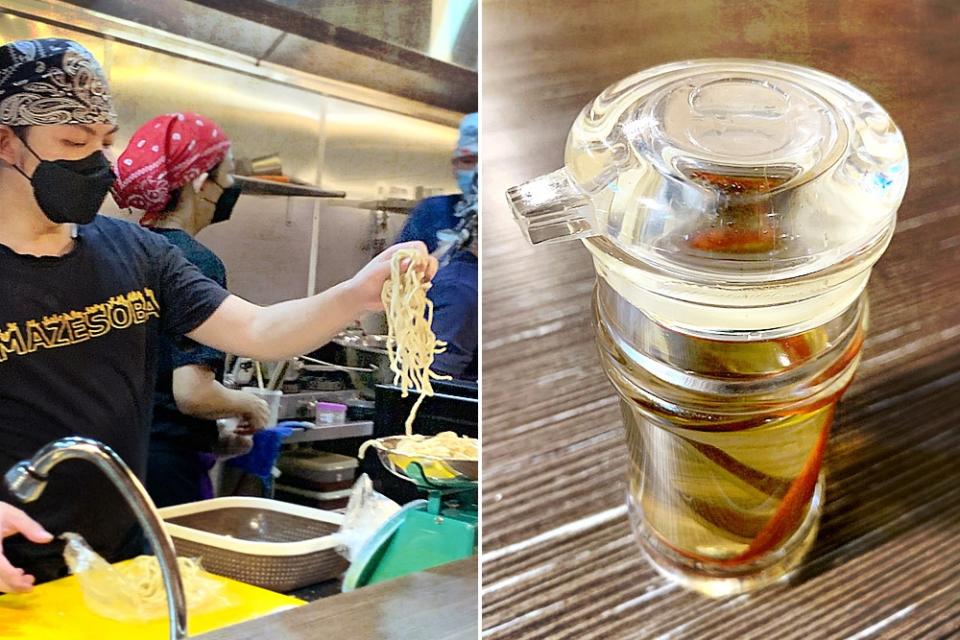
Measuring the correct amount of noodles (left). Homemade kelp vinegar (right).
In Japan, mazesoba is also known as aburasoba or “noodles in fat” so there are plenty of other menyas who would lay claim to the fact they invented the dish. It really doesn’t matter to the casual diner who originated it as long as it tastes good, right?
To begin eating, first have a taste of the noodles by themselves. These ought to be slick with the decadent pork fat. Next mix all the toppings together with the noodles and taste it again.
The explosion of flavours and colours in your bowl ought to invoke “fireworks” (which is what hanabi refers to in Japanese).
And when you’ve eaten about half of your noodles, it’s time to jazz up your bowl further by adding some condiments.
Typically there will be a variety of condiments at your table in a ramen bar. Different menyas offer different sauces and spices. Fiery chilli oils in Yokohama and sharp vinegars in Fukuoka.
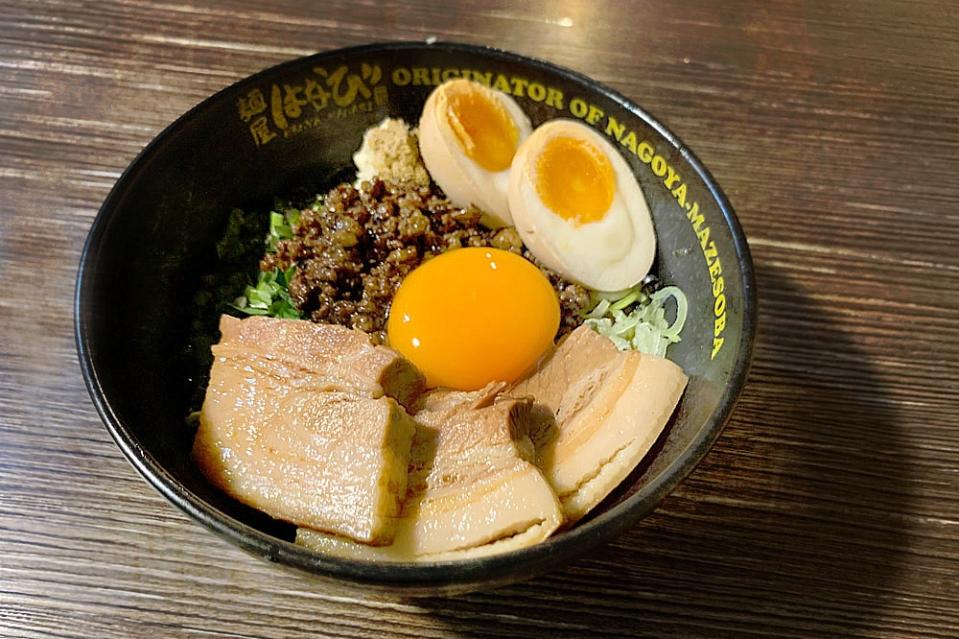
Toroniku Nagoya Mazesoba features slabs of braised pork cheeks.
Here, Menya Hanabi keeps things simple: there is a tiny canister of shichimi togarashi (Japanese seven-flavour spice) and a bottle of homemade kelp vinegar, purportedly to add some sweetness to the noodles.
In reality, given the richness of the mazesoba (or any ramen, really, with the copious amounts of flavour fat), the vinegar does help cut any lingering greasiness or cloying feeling.
My niece carefully pours a few drops to her spoon to taste first, testing to see if it’s delicate or harsh. Me, I douse my ramen with the vinegar, eyeballing it and trusting my instincts.
There is no right or wrong way of going about this, after all. We all find our own ways.
My niece ends up using less kelp vinegar than I do; I like my food to be more acidic than most. What matters is that we make it just right for ourselves. We are all Goldilocks looking for Baby Bear’s bowl of porridge.
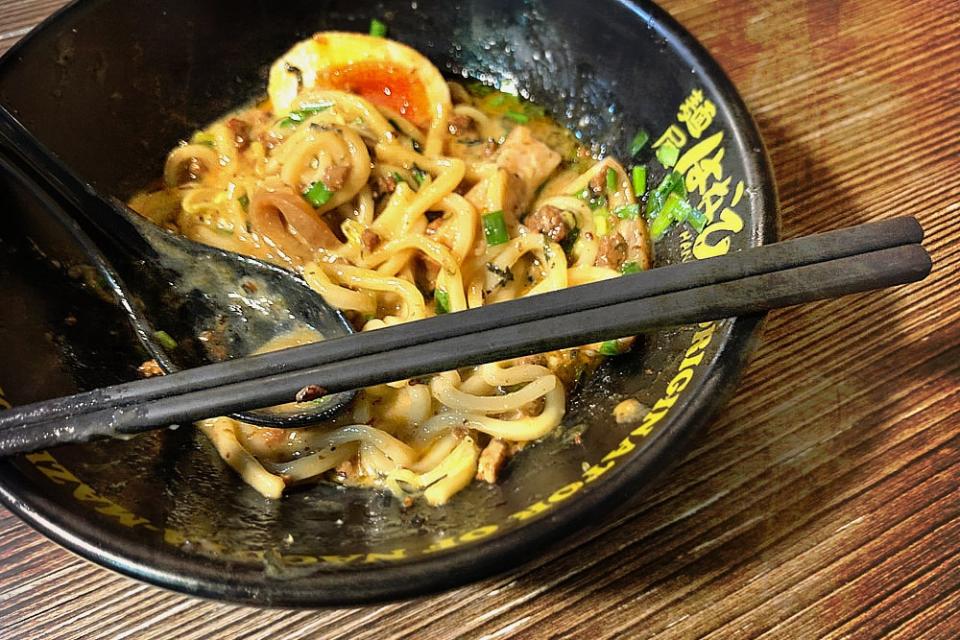
The way to eat 'mazesoba' is to mix all the toppings together with the noodles.
Except it’s not a bowl of porridge but a bowl of noodles that is almost empty. Here comes the fun part for some diners.
Ask for a free scoop of rice from the cooks to mix it with remaining sauce in your bowl. Liven it up with a dash of shichimi togarashi, the aromatic sanshō giving a mild kick (see there was a reason for the other condiment, in the end), then stir deftly.
This is a tradition with mazesoba, but also at some other menyas where an extra bowl of rice or even more noodles can help you polish off the remaining soup or gravy.
There is simultaneously a sense of frugality here (“waste not, want not”) and gluttony (you are essentially consuming more starchy carbohydrates on purpose).
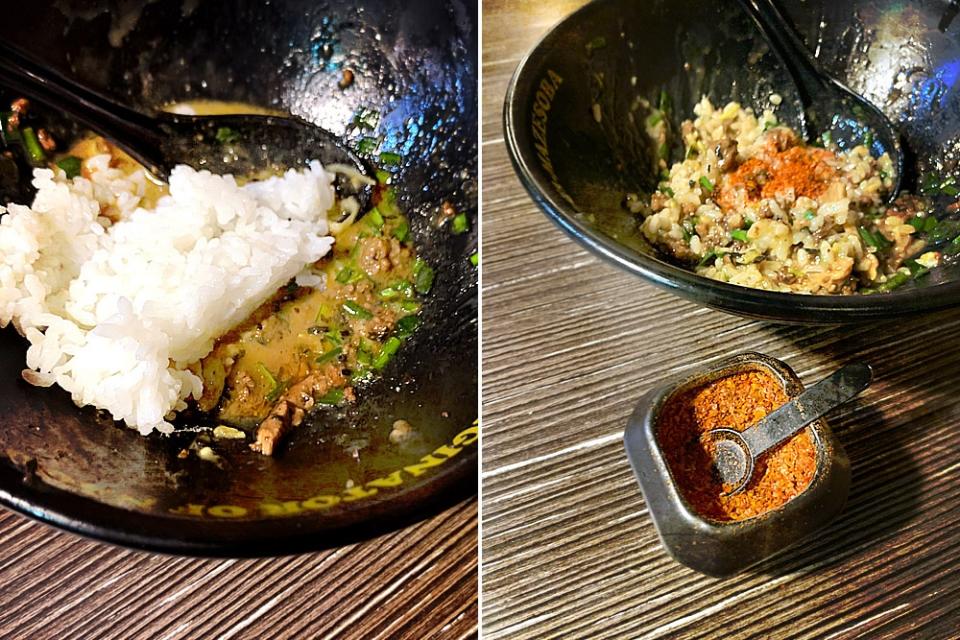
Ask for a free scoop of rice from the cooks to mix it with remaining sauce in your bowl.
The dichotomy between both extremes is the pleasurable push/pull you experience whenever you venture into a menya, of course.
No one decides to sup on ramen when they are on a diet; it is an act of hedonism, of telling yourself this is a cheat meal, a reward, or you acquiescing to your cravings simply for the heck of it.
There is a sense of abandonment.
You don’t feel guilty, somehow. As you step outside after paying the bill, your wallet lighter and your belly heavier, you know this isn’t a daily affair but a meal to remember. A memory to relish, the ghost of rich oils still coating your taste buds... until your next visit, that is.
Menya Hanabi 麺屋はなび
No 16, Jalan Radin Bagus 6, Bandar Baru Sri Petaling, KL
Open daily 12pm-9:45pm
Phone: +60 3-2858 1392
* Follow us on Instagram @eatdrinkmm for more food gems.



